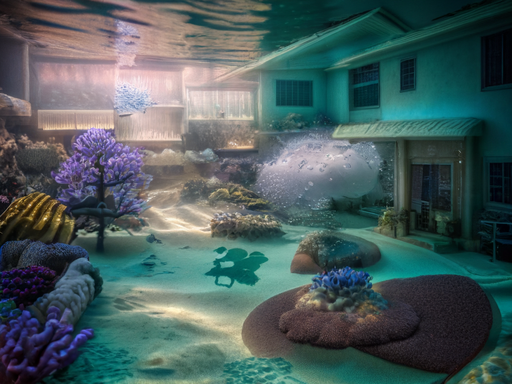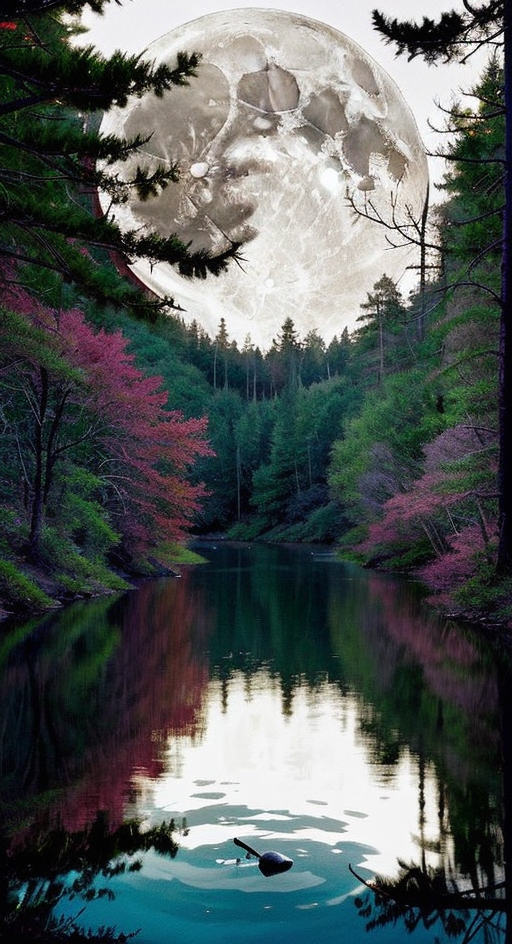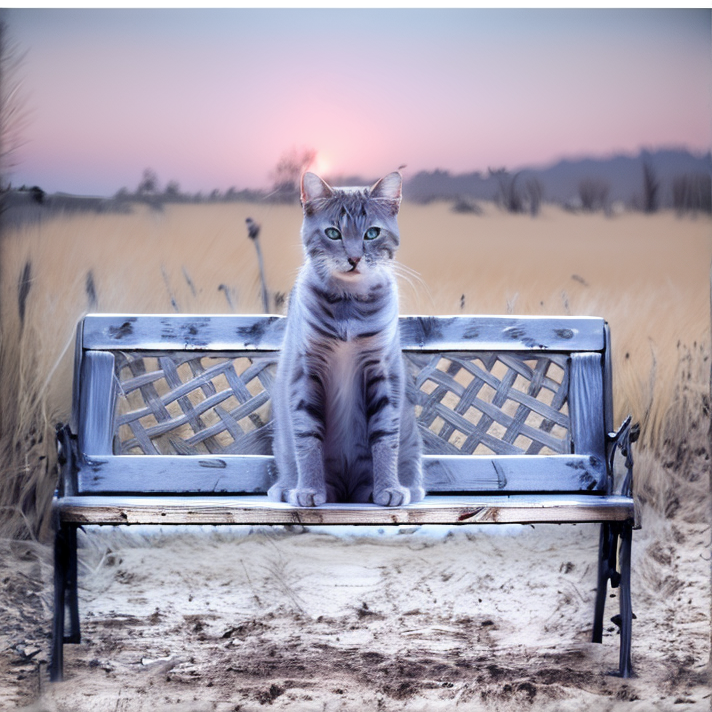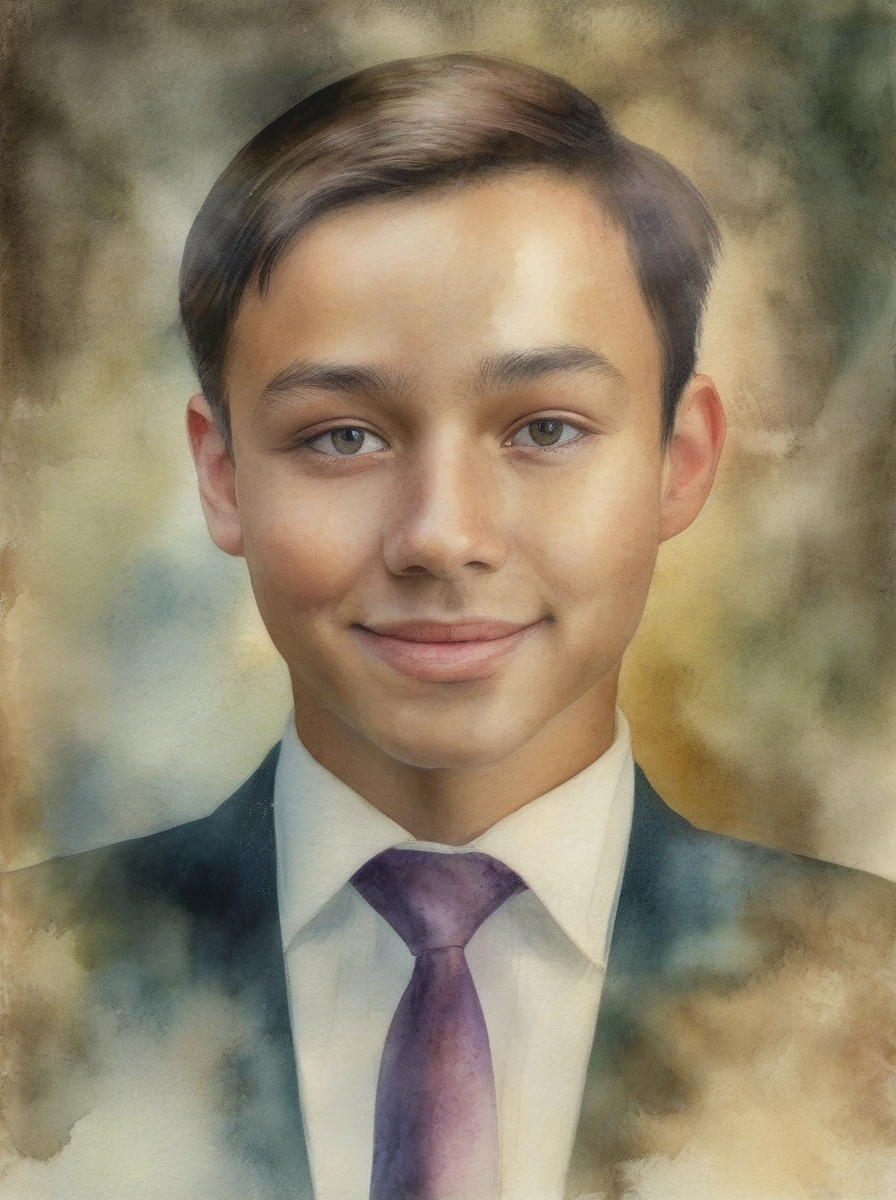multi-controlnet-x-consistency-decoder-x-realestic-vision-v5
Maintainer: usamaehsan

3

| Property | Value |
|---|---|
| Model Link | View on Replicate |
| API Spec | View on Replicate |
| Github Link | No Github link provided |
| Paper Link | No paper link provided |
Create account to get full access
Model overview
The multi-controlnet-x-consistency-decoder-x-realestic-vision-v5 model is an advanced AI tool that combines several state-of-the-art techniques to generate high-quality, realistic images. It builds upon the capabilities of the ControlNet framework, allowing for fine-grained control over various aspects of the image generation process. This model can produce impressive results in areas such as inpainting, multi-task control, and high-resolution image synthesis.
Model inputs and outputs
The multi-controlnet-x-consistency-decoder-x-realestic-vision-v5 model accepts a wide range of inputs, including prompts, control images, and various parameters to fine-tune the generation process. These inputs allow users to have a high level of control over the output images, tailoring them to their specific needs. The model generates one or more high-quality images as the output.
Inputs
- Prompt: The textual description that guides the image generation process.
- Seed: The random seed used to ensure reproducibility of the generated images.
- Max Width/Height: The maximum resolution of the generated images.
- Scheduler: The algorithm used to schedule the diffusion process.
- Guidance Scale: The scale for classifier-free guidance, which controls the trade-off between image fidelity and adherence to the prompt.
- Num Inference Steps: The number of steps to run the denoising process.
- Control Images: A set of images that provide additional guidance for the generation process, such as for inpainting, tile-based control, and lineart.
Outputs
- Generated Images: One or more high-quality, realistic images that reflect the provided prompt and control inputs.
Capabilities
The multi-controlnet-x-consistency-decoder-x-realestic-vision-v5 model excels at generating highly detailed and realistic images. It can handle a wide range of subjects, from landscapes and architecture to portraits and abstract scenes. The model's ability to leverage multiple ControlNet modules allows for fine-grained control over various aspects of the image, resulting in outputs that are both visually appealing and closely aligned with the user's intent.
What can I use it for?
This model can be a powerful tool for a variety of applications, including:
- Creative Content Generation: Use the model to generate unique, high-quality images for use in art, design, and various creative projects.
- Inpainting and Image Editing: Leverage the model's inpainting capabilities to seamlessly fill in or modify specific areas of an image.
- Product Visualization: Generate realistic product images for e-commerce, marketing, or presentation purposes.
- Architectural Visualization: Create detailed, photorealistic renderings of buildings, interiors, and architectural designs.
Things to try
One interesting aspect of the multi-controlnet-x-consistency-decoder-x-realestic-vision-v5 model is its ability to handle multiple ControlNet modules simultaneously. Try experimenting with different combinations of control images, such as using a tile image, a lineart image, and an inpainting mask, to see how the model's output is affected. Additionally, you can explore the "guess mode" feature, which allows the model to recognize the content of the input image even without a prompt.
This summary was produced with help from an AI and may contain inaccuracies - check out the links to read the original source documents!
Related Models

controlnet-1.1-x-realistic-vision-v2.0

3.6K
The controlnet-1.1-x-realistic-vision-v2.0 model is a powerful AI tool created by Usama Ehsan that combines several advanced techniques to generate high-quality, realistic images. It builds upon the ControlNet and Realistic Vision models, incorporating techniques like multi-ControlNet, single-ControlNet, IP-Adapter, and consistency-decoder to produce remarkably realistic and visually stunning outputs. Model inputs and outputs The controlnet-1.1-x-realistic-vision-v2.0 model takes a variety of inputs, including an image, a prompt, and various parameters to fine-tune the generation process. The output is a high-quality, realistic image that aligns with the provided prompt and input image. Inputs Image**: The input image that serves as a reference or starting point for the generation process. Prompt**: A text description that guides the model in generating the desired image. Seed**: A numerical value that can be used to randomize the generation process. Steps**: The number of inference steps to be taken during the generation process. Strength**: The strength or weight of the control signal, which determines how much the model should focus on the input image. Max Width/Height**: The maximum dimensions of the generated image. Guidance Scale**: A parameter that controls the balance between the input prompt and the control signal. Negative Prompt**: A text description that specifies elements to be avoided in the generated image. Outputs Output Image**: The generated, high-quality, realistic image that aligns with the provided prompt and input image. Capabilities The controlnet-1.1-x-realistic-vision-v2.0 model is capable of generating highly realistic images across a wide range of subjects and styles. It can seamlessly incorporate visual references, such as sketches or outlines, to guide the generation process and produce outputs that blend reality and imagination. The model's versatility allows it to be used for tasks like photo manipulation, digital art creation, and visualization of conceptual ideas. What can I use it for? The controlnet-1.1-x-realistic-vision-v2.0 model is a versatile tool that can be used for a variety of applications. It can be particularly useful for digital artists, designers, and creatives who need to generate high-quality, realistic images for their projects. Some potential use cases include: Concept art and visualization: Generate visually stunning, realistic representations of ideas and concepts. Product design and advertising: Create photorealistic product images or promotional visuals. Illustration and digital painting: Combine realistic elements with imaginative touches to produce captivating artworks. Photo manipulation and editing: Enhance or transform existing images to achieve desired effects. Things to try One interesting aspect of the controlnet-1.1-x-realistic-vision-v2.0 model is its ability to blend multiple control signals, such as sketches, outlines, or depth maps, to produce unique and unexpected results. Experimenting with different combinations of control inputs can lead to fascinating and unexpected outputs. Additionally, exploring the model's handling of specific prompts or image styles can uncover its versatility and unlock new creative possibilities.
Updated Invalid Date

controlnet-x-ip-adapter-realistic-vision-v5

356
The controlnet-x-ip-adapter-realistic-vision-v5 model is a versatile AI model that combines multiple ControlNet modules and an IP Adapter to enable a wide range of image generation and manipulation capabilities. This model is designed to produce high-quality, realistic-looking images while maintaining a high level of control and customization. The model builds upon similar models like real-esrgan, deliberate-v6, absolutereality-v1.8.1, reliberate-v3, and rembg-enhance, each of which offers unique capabilities and use cases. Model inputs and outputs The controlnet-x-ip-adapter-realistic-vision-v5 model takes a variety of inputs, including prompts, images, and various control parameters, to generate high-quality, realistic-looking images. The model's outputs are image files that can be used for a wide range of applications, such as art, design, and visualization. Inputs Prompt**: The text prompt that describes the desired image. Seed**: A numerical value that sets the random seed for reproducible image generation. Max Width/Height**: The maximum width and height of the generated image. Scheduler**: The denoising scheduler used for the diffusion process. Guess Mode**: A boolean flag that enables the model to recognize the content of the input image even without a prompt. Mask Image**: An image used for inpainting. Tile Image**: A control image for the tile ControlNet. Lineart Image**: A control image for the canny ControlNet. Scribble Image**: A control image for the scribble ControlNet. Brightness Image**: A control image for the brightness ControlNet. Inpainting Image**: A control image for the inpainting ControlNet. IP Adapter Image**: An image used for the IP Adapter. Outputs Generated Image(s)**: The high-quality, realistic-looking image(s) generated by the model. Capabilities The controlnet-x-ip-adapter-realistic-vision-v5 model is capable of generating a wide range of realistic-looking images based on user inputs. It can handle tasks such as inpainting, multi-ControlNet integration, and leveraging an IP Adapter to produce highly detailed and visually stunning results. What can I use it for? The controlnet-x-ip-adapter-realistic-vision-v5 model can be used for various creative and artistic applications, such as generating concept art, product visualizations, illustrations, and even photo-realistic images. Its versatility and high-quality output make it a valuable tool for designers, artists, and anyone looking to create visually appealing content. Things to try One interesting aspect of the controlnet-x-ip-adapter-realistic-vision-v5 model is its ability to utilize multiple ControlNet modules and the IP Adapter to produce highly detailed and realistic images. Users can experiment with different control images and parameter settings to see how they affect the final output and explore the model's full capabilities.
Updated Invalid Date

controlnet-x-majic-mix-realistic-x-ip-adapter

21
The controlnet-x-majic-mix-realistic-x-ip-adapter model is a powerful AI model developed by usamaehsan that works with inpainting and multi-controlnet + single-controlnet, as well as IP-adapter and without IP-adapter. This model shares some similarities with other models like controlnet-x-ip-adapter-realistic-vision-v5, realvisxl-v3-multi-controlnet-lora, magic-image-refiner, swap-sd, and instant-id-multicontrolnet, all of which focus on various image generation and editing capabilities. Model inputs and outputs The controlnet-x-majic-mix-realistic-x-ip-adapter model takes a variety of inputs, including text prompts, seed values, image size parameters, scheduling options, and more. It can generate multiple output images based on these inputs. Inputs Prompt**: The text prompt that describes the desired image, using the Compel language to increase the weight of certain words. Seed**: The seed value used for random number generation. Max Width/Height**: The maximum width and height of the generated image. Scheduler**: The denoising scheduler used for the diffusion process. Guess Mode**: A mode that allows the ControlNet encoder to recognize the content of the input image, even without a prompt. Mask Image**: An image used for inpainting. Tile Image**: An image used for the tile ControlNet. Lineart Image**: An image used for the Canny ControlNet. Scribble Image**: An image used for the scribble ControlNet. Brightness Image**: An image used for the brightness ControlNet. Inpainting Image**: An image used for the inpainting ControlNet. IP Adapter Image**: An image used for the IP Adapter. Sorted Controlnets**: A comma-separated list of the ControlNet names to use. Outputs Output Images**: The generated images based on the provided inputs. Capabilities The controlnet-x-majic-mix-realistic-x-ip-adapter model excels at image generation and editing, allowing users to create high-quality, realistic images with a variety of control inputs. Its multi-ControlNet and IP-Adapter capabilities make it a versatile tool for tasks like inpainting, style transfer, and image refinement. What can I use it for? The controlnet-x-majic-mix-realistic-x-ip-adapter model can be used for a wide range of creative and practical applications, such as generating concept art, product visualizations, and personalized images. Its inpainting and multi-ControlNet features make it particularly useful for tasks like image restoration, object removal, and scene composition. Additionally, the model's IP-Adapter capabilities allow for efficient and high-quality image editing, making it a valuable tool for businesses and individuals working in design, marketing, and other visual industries. Things to try One interesting aspect of the controlnet-x-majic-mix-realistic-x-ip-adapter model is its ability to use multiple ControlNets simultaneously, allowing for a high degree of control over the generated images. Users can experiment with different combinations of ControlNets, such as tile, inpainting, and lineart, to achieve unique and compelling visual effects. Additionally, the model's IP-Adapter feature can be used to further refine and enhance the output, making it a valuable tool for users who require a high level of image quality and detail.
Updated Invalid Date

controlnet-v1-1-multi

1
controlnet-v1-1-multi is a CLIP-based image generation model developed by the Replicate AI creator zylim0702. It combines ControlNet 1.1 and SDXL (Stable Diffusion XL) for multi-purpose image generation tasks. This model allows users to generate images based on various control maps, including Canny edge detection, depth maps, and normal maps. It builds upon the capabilities of prior ControlNet and SDXL models, providing a flexible and powerful tool for creators. Model inputs and outputs The controlnet-v1-1-multi model takes a variety of inputs, including an input image, a prompt, and control maps. The input image can be used for image-to-image tasks, while the prompt defines the textual description of the desired output. The control maps, such as Canny edge detection, depth maps, and normal maps, provide additional guidance to the model during the image generation process. Inputs Image**: The input image to be used for image-to-image tasks. Prompt**: The textual description of the desired output image. Structure**: The type of control map to be used, such as Canny edge detection, depth maps, or normal maps. Number of samples**: The number of output images to generate. Ddim steps**: The number of denoising steps to be used during the image generation process. Strength**: The strength of the control map influence on the output image. Scale**: The scale factor for classifier-free guidance. Seed**: The random seed used for image generation. Eta**: The amount of noise added to the input data during the denoising diffusion process. A prompt**: Additional text to be appended to the main prompt. N prompt**: Negative prompt to be used for image generation. Low and high thresholds**: Thresholds for Canny edge detection. Image upscaler**: Option to enable image upscaling. Autogenerated prompt**: Option to automatically generate a prompt for the input image. Preprocessor resolution**: The resolution of the preprocessed input image. Outputs Generated images**: The output images generated by the model based on the provided inputs. Capabilities The controlnet-v1-1-multi model is capable of generating a wide range of images based on various control maps. It can produce detailed and realistic images by leveraging the power of ControlNet 1.1 and SDXL. The model's ability to accept different control maps, such as Canny edge detection, depth maps, and normal maps, allows for a high degree of control and flexibility in the image generation process. What can I use it for? The controlnet-v1-1-multi model can be used for a variety of creative and practical applications, such as: Concept art and illustration**: Generate detailed and imaginative images for use in various creative projects, such as game development, book illustrations, or product design. Product visualization**: Create photorealistic product renderings based on 3D models or sketches using the depth map and normal map control options. Architectural visualization**: Generate high-quality architectural visualizations and renderings using the Canny edge detection and depth map controls. Artistic expression**: Experiment with different control maps to create unique and expressive artworks that blend realism and abstract elements. Things to try With the controlnet-v1-1-multi model, you can explore a wide range of creative possibilities. Try using different control maps, such as Canny edge detection, depth maps, and normal maps, to see how they affect the output images. Experiment with various prompt combinations, including the use of the "A prompt" and "N prompt" options, to fine-tune the generated images. Additionally, consider enabling the image upscaler feature to enhance the resolution and quality of the output.
Updated Invalid Date